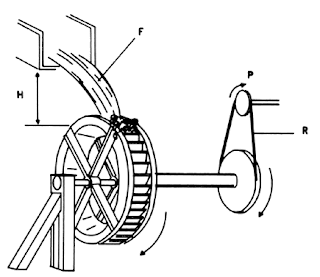The power drawn by equipment is expressed in Watts or Volt-Amps (VA).
The power in Watts is the real power drawn by the equipment.
The power in Watts is the real power drawn by the equipment.
Volt-Amps are called the "apparent power" and are the product of the voltage applied to the equipment times the current drawn by the equipment.
Both Watt and VA ratings have a use and purpose.
The Watt rating determines the actual power purchased from the utility company and the heat loading generated by the equipment.
The VA rating is used for sizing wiring and circuit breakers.
The VA and Watt ratings for some types of electrical loads, like incandescent light bulbs, are identical.
However, for equipment the Watt and VA ratings can differ significantly, with the VA rating always being equal to or larger than the Watt rating.
The ratio of the Watt to VA rating is called the "Power Factor" and is expressed either as a number (i.e. 0.8) or a percentage (i.e. 80%).
Examples where a sizing problem can occur
Both Watt and VA ratings have a use and purpose.
The Watt rating determines the actual power purchased from the utility company and the heat loading generated by the equipment.
The VA rating is used for sizing wiring and circuit breakers.
The VA and Watt ratings for some types of electrical loads, like incandescent light bulbs, are identical.
However, for equipment the Watt and VA ratings can differ significantly, with the VA rating always being equal to or larger than the Watt rating.
The ratio of the Watt to VA rating is called the "Power Factor" and is expressed either as a number (i.e. 0.8) or a percentage (i.e. 80%).
Examples where a sizing problem can occur
Example #1: Consider the case of a typical 1000VA turbine. The user wants to power a 900W heater with the turbine. The heater has a Watt rating of 900W and a VA rating of 900VA with a power factor of 1. Although the VA rating of the load is 900VA, which is within the VA rating of the turbine, the turbine will probably not power this load. That is because the 900W rating of the load exceeds the Watt rating of the turbine, which is most likely 60% of 1000VA or around 600W.
Example #2: Consider the case of a 1000VA turbine. The user wants to power a 900VA equipment with the turbine. The equipment has a Power Factor Corrected power supply, and so has a Watt rating of 900W and a VA rating of 900VA. Although the VA rating of the load is 900VA, which is within the VA rating of the turbine, the turbine will not power this load. That is because the 900W rating of the load exceeds the Watt rating of the turbine, which is 60% of 1000VA or around 600W.
Example #2: Consider the case of a 1000VA turbine. The user wants to power a 900VA equipment with the turbine. The equipment has a Power Factor Corrected power supply, and so has a Watt rating of 900W and a VA rating of 900VA. Although the VA rating of the load is 900VA, which is within the VA rating of the turbine, the turbine will not power this load. That is because the 900W rating of the load exceeds the Watt rating of the turbine, which is 60% of 1000VA or around 600W.
How to avoid sizing errors
Equipment nameplate ratings are often in VA, which makes it difficult to know the Watt ratings. If using equipment nameplate ratings for sizing, a user might configure a system, which appears to be correctly sized based on VA ratings but actually exceeds the turbine Watt rating. By sizing the VA rating of a load to be no greater than 60% of the VA rating of the turbine, it is impossible to exceed the Watt rating of the turbine. Therefore, unless you have high certainty of the Watt ratings of the loads, the safest approach is to keep the sum of the load nameplate ratings below 60% of the turbine VA rating. Note that this conservative sizing approach will typically give rise to an oversized turbine and a larger run time than expected.
Conclusion
Power consumption information on equipment loads is often not specified in a way that allows simple sizing of a turbine. It is possible to configure systems that appear to be correctly sized but actually overload the turbine. By slightly over sizing the turbine compared with the nameplate ratings of the equipment, proper operation of the system is ensured. Over sizing also provides the side benefit. However, engineer must be ensure that the turbine is sized properly and that you do not waste money and space on an over-sized unit.



1 ulasan:
RBI biler nk siap?
Catat Ulasan